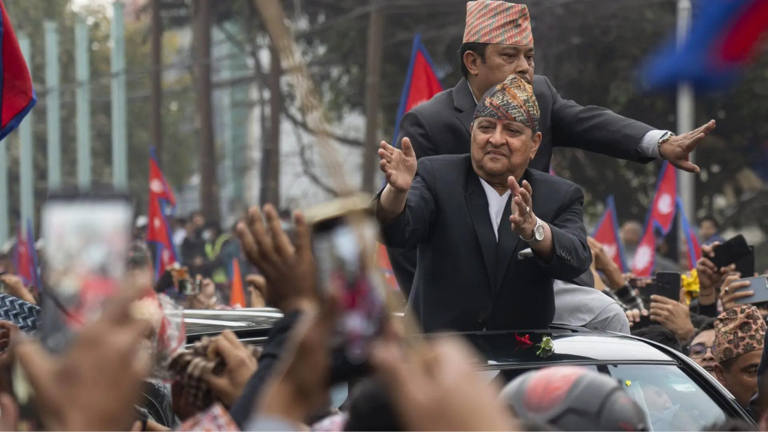Growing Calls for the Return of the Monarchy Amid Political Discontent
- March 16, 2025
- 1 minutes reading

Seventeen years after Nepal abolished its centuries-old monarchy, a movement calling for its restoration is gaining momentum. The streets of Kathmandu, Pokhara, and Biratnagar have recently seen thousands of protesters waving red and yellow royal flags, chanting slogans in support of former King Gyanendra Shah.
The demand is not just about nostalgia; it reflects growing frustration with Nepal’s current political landscape. Many citizens feel disillusioned with the federal democratic system, citing corruption, economic struggles, unemployment, and lack of political stability.
“I voted for democracy, believing it would bring progress. But what do we have now? Instability, corruption, and endless power struggles among political parties,” says Santosh Adhikari, a shop owner in Kathmandu. “At least during the monarchy, we had a sense of national unity.”
Supporters of the monarchy argue that the continuous political deadlock and frequent changes in government have made Nepal weaker on the global stage. Meanwhile, opposition voices highlight that the monarchy was not free from flaws and that Nepal’s republican system is still evolving.
Despite the rising support, experts believe that bringing back the monarchy legally would be an uphill battle. The current political parties that spearheaded Nepal’s transition to a republic remain in power, and revisiting the monarchy would require a constitutional amendment and a national referendum—a complex process.
As Nepal prepares for its next round of elections, it remains to be seen whether this movement will gain enough traction to challenge the existing system or remain a symbolic protest against political inefficiency.